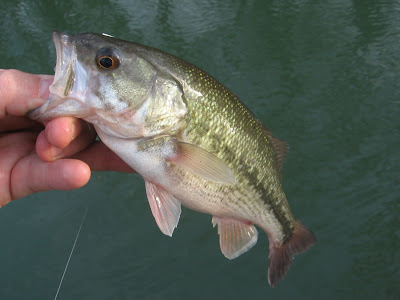The Basic Needs of Trout
Food
The tailwaters throughout the Southeast supply trout with abundant forage, including a wide array of nymphs, midges and adult insects. Although these are usually the most common food in Southeastern tailwaters, don’t forget about small fish and terrestrials.
Whatever the choice of fly or the fish’s choice of food, one thing to remember is to get the fly into the feeding lane. This increases the odds of hooking up with the fish and provides a chance at that hero shot.
Stocking locations, while popular with many anglers, provide food sources for feeding fish. Many people fish the stocking locations on a river -- including those who fish with bait. Fish are sometimes drawn to these places as an easy source for food. Larger fish can also be drawn to stocking locations when the stocking truck arrives. Also, people who keep fish for consumption sometimes will clean their catch at the various stocking locations and public access points. Larger predatory fish will come into these areas in the evenings and in the early morning hours for an easy meal.
The opposite of fishing to feeding fish is provoking a strike in resting fish. Some fish, especially larger fish, tend to eat at night when most of us are not on the water. A fish that eats at night will rest during the day. Therefore, the best way to induce a strike with a fly-rod is with large streamer patterns. Large streamers thrown in slower-water locations can provoke the predatory instinct in larger resting trout, resulting in some memorable takes.
Protection
Someone once said that fish have an IQ of six. I’ve never seen the IQ test for a fish, but I would agree fish should have a somewhat smaller IQ than the angler who pursues them. Fish have the fight or flight instinct. This instinct can determine a fish’s daily activity and, therefore, where they spend the majority of their day. Trout, in particular, seek protection from predatory animals such as larger fish, otters, eagles, herons and sometimes anglers.
Trout will often seek cover close to a food source. This cover includes structures such as logs, large rocks, shoals with faster moving water, and undercut banks. Water will move slightly faster on the sides, above and below structure – but a nice break in the current can be found directly behind the structure. This provides opportunities for trout to move out into the faster moving water and grab a quick meal, then move back into or behind the safety of the structure. Scouting and knowing the location of these natural current breaks is a good way to increase the odds of catching fish in a tailwater.
Temperature
Trout prefer cool water. Brook trout prefer water temps below 68 degrees while a brown trout lives best in water below 75 degrees. Rainbow trout fit somewhere between the brook and brown trout, preferring temps below 70 degrees.
Temperatures can vary within a tailwater. For instance, the section of river immediately below a dam will be cooler than a section further downstream. In the summer, deep holes will often be cooler than long shallow flats. Runs with swift moving water provide cooler temperature for trout, but a run with swift moving water and shade can be an even better source for cooler temperatures. Rocks and logs within swifter moving water and undercut banks with shade will provide cooler flows as well.
Take a thermometer with you when fishing tailwaters and do a little research for yourself. Taking your own stream temps will help you to understand the anatomy of the tailwater.
Oxygen
Fish, like humans, need oxygen to sustain life. A fish does not have lungs, but takes oxygen from the water through their gills. The oxygen in the water is called dissolved oxygen, and its presence is crucial to tailwater fisheries. Wildlife agencies work with the TVA and the Corps of Engineers on a variety of techniques to increase the dissolved oxygen levels in tailwaters, including minimum flow requirements and the installation of auto-venting turbines in some dams. These techniques can not only help the levels of dissolved oxygen in the water, but can also increase the aquatic bug activity … which increases the food source for feeding trout.
I am headed out to fish for the weekend! See you on the water.

























